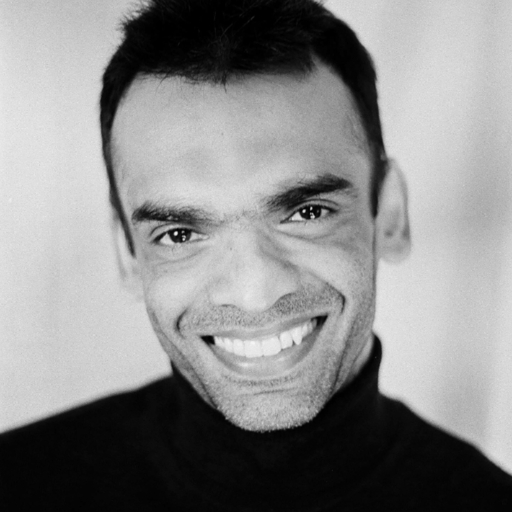Q&A: Canada needs to triple its climate financing for other countries, climate NGOs say
Why It Matters
Canada’s international financial contribution of $5.3 billion to combat climate change falls short of its fair share in quantity and quality according to experts. Tripling the money, disbursed in grants and not loans, and prioritizing adaptation is needed.

Nearly 200 countries will convene in Baku, Azerbaijan, next month to decide how to finance the mitigation of climate change—and Canada is already behind, according to experts.
As an OECD country, Canada has agreed to provide climate financing to developing countries to help them transition away from fossil fuels, reduce greenhouse emissions, and take measures to mitigate and adapt to climate change.
However, this year’s conference in Baku comes at a critical moment. Dubbed the “Finance COP,” the coming together of countries will see them agree to new financial targets to help combat climate change.
A total of 198 countries will participate in negotiations at the 29th Conference of Parties of the United Nations Framework Convention on Climate (COP 29).
The negotiations include setting an ambitious financial target, improving the financing quality, determining who contributes, establishing transparency, setting a timeframe, determining the focus areas, and mobilizing private capital.
Climate Action Network-Canada (CAN-Canada) is the co-chair of the Canadian Coalition on Climate Change and Development and represents more than 150 climate groups in the country.
It responded to the federal government’s call for consultations on Canada’s next climate change finance commitment, highlighting the measures the country should undertake for its next cycle of climate financing.
Future of Good spoke to Soomin Han, climate finance policy analyst at CAN-Canada, to evaluate Canada’s contributions to global climate action and identify room for improvement. The interview has been edited for clarity and grammar.

Q: Could you provide the context for global climate financing?
As per the Paris Agreement, developed countries are responsible for providing climate financing to help developing nations transition away from fossil fuels, mitigate the effects of climate change, and adapt to new realities.
Negotiations are ongoing for a new climate finance framework called the New Collective Quantified Goal on Climate Finance (NCQG) for COP 29. We and international colleagues are pushing for a few critical changes.
During the 2009 Copenhagen COP, developed countries committed to providing $100 billion annually by 2020. Last year, the OECD reported that by 2022, they had provided USD 115.9 in climate financing for less developed countries, exceeding the original target.
However, a 2023 Oxfam report estimated that only USD $21 billion to USD $24.5 billion could be considered real support. Only a quarter of the sum was in the form of grants; the remaining amount is almost entirely loans.
Q: What is Canada’s place in this framework?
A: We’re an Annex II country under the UN Framework Convention on Climate Change, which means we must provide climate financing to developing nations. From 2021 to 2026, Canada committed $5.3 billion, but it has only disbursed around 79 per cent so far.
Our concern is that $5.3 billion only accounts for 59 per cent of Canada’s fair share of the USD $100 billion goal.
Q: What would Canada’s fair share be?
A: We’ve been advocating for a tripling of this figure. Though short of its fair share, a tripling would show Canada’s serious commitment to addressing the climate crisis.
If Canada truly paid its fair share, mitigation would cost around $25 billion annually by 2025, growing to $86 billion by 2035.
Adaptation would require $12-21 billion annually by 2025, increasing to $27 billion by 2035. We estimate $8 billion annually by 2025 for loss and damage, growing to $25 billion by 2035.
These figures may seem significant, but they’re necessary to ensure that Canada contributes its fair share towards global climate equity and justice.
There is often an argument that there aren’t enough public funds to support this, but we know from fossil fuel subsidies and military budgets that the money is there. It’s just not allocated to climate action. The latest report by Oil Change International outlines how we can reallocate these funds toward climate financing.
Q: How does Canada currently distribute climate financing?
A: Canada prioritizes low-lying, vulnerable states, tiny island developing states, and least-developed countries in its climate finance proposals. Recently, Canada has expanded its focus to include conflict-affected countries as well.
Canada’s current $5.3 billion pledge allocates 65 per cent to mitigation, 34 per cent to adaptation, and only 1 per cent to loss and damage.
This distribution is problematic. Adaptation financing is critically underfunded.
A 2023 UNEP Adaptation Gap Report estimates the cost of implementing adaptation priorities in developing countries to be USD $215-$387 billion annually. This means a gap of USD $194-$366 billion per year remains. This figure is 10 to 18 times greater than current international adaptation finance flows.
Mitigation, on the other hand, attracts 91 per cent of global climate financing because private investors see it as a market opportunity, unlike adaptation, which often doesn’t have a clear business case. This is why adaptation finance needs to come from public funds.
Time and again, with natural disasters like hurricanes, we’ve seen that countries most vulnerable to climate change—those contributing the least to it—are not receiving the necessary funds to adapt or rebuild. This relates to loss and damage, which requires billions annually. If we don’t fund adaptation now, that figure will only grow.
Q: You argue climate funds should be provided as grants and not loans. Why is that?
A: A Reuters investigation earlier this year revealed many G7 countries provide climate financing as loans, generating profit. This puts developing countries in cycles of debt, preventing them from effectively mitigating or adapting to climate change. At least 60 per cent of developing countries are already in debt distress, so loans only exacerbate the problem.
Currently, around 60 per cent of Canada’s financing is via loans. Loans shouldn’t exceed 40 per cent of Canada’s total climate finance and should only be used for mitigation projects in middle-income countries. Adaptation, loss, and damage must be funded through grants, as these areas don’t attract private financing. Loans for mitigation should be used only where appropriate, such as in larger mitigation projects in middle—to high-income countries.
Q: Could you talk more about the need for transparency in funding?
A: At this year’s COP, we’re pushing for a clear definition of climate finance. Getting this definition right is critical to ensure funds are appropriately allocated and accessible.
One major hurdle in accessing financing is the complex application process. Countries must navigate multiple accreditation forms, and access is limited. There’s also a lack of transparency about whether financing is provided as loans or grants. Without clarity, tracking where money is going—mitigation, adaptation, or loss and damage is challenging.
Loss and damage are particularly contentious issues for developed countries. Many hesitate to commit because it’s difficult to quantify how much is needed. This fund was only agreed upon two years ago at COP 27. While contributions have started, many developed nations are still testing the waters as they work out the implementation details.

